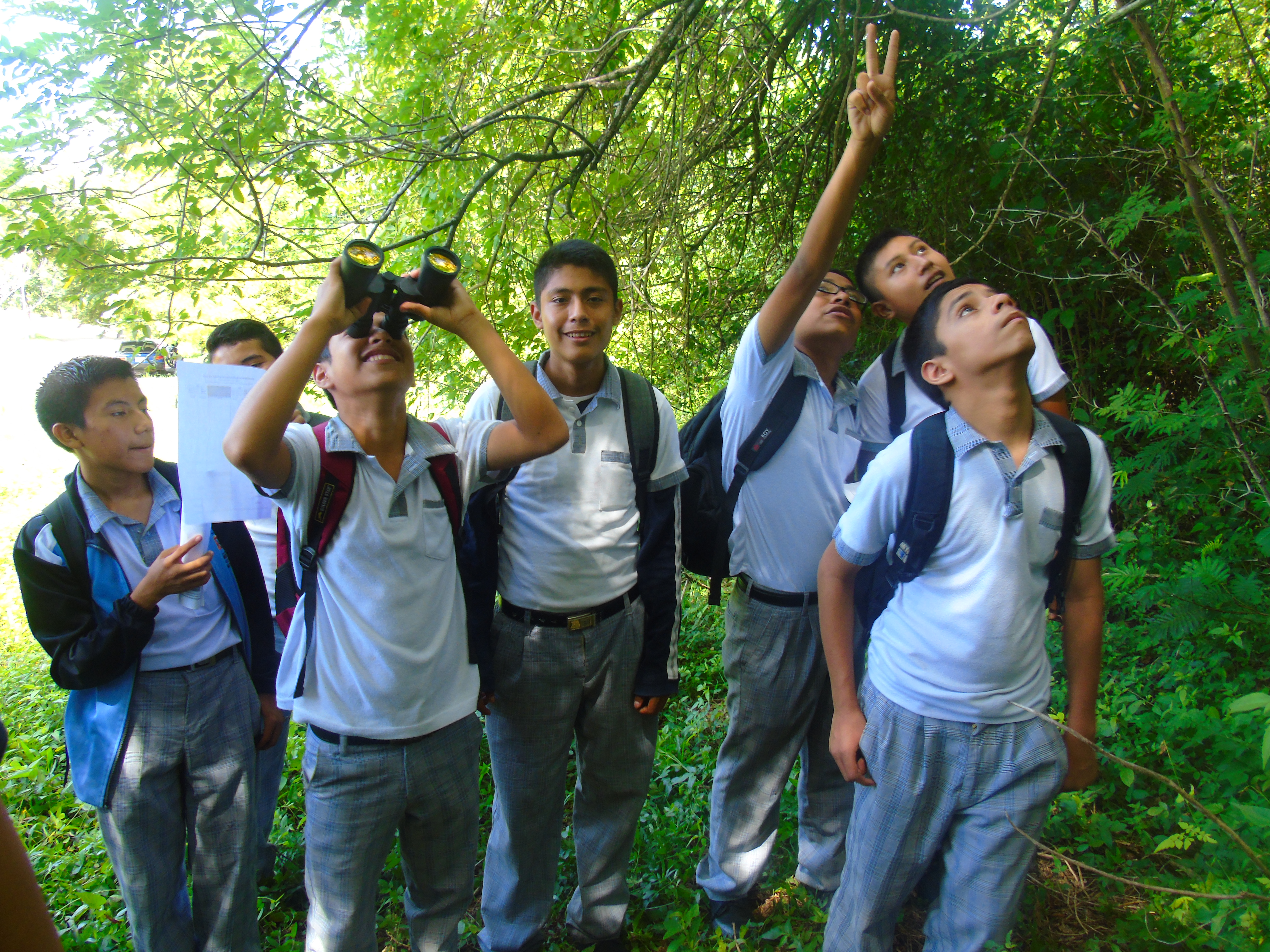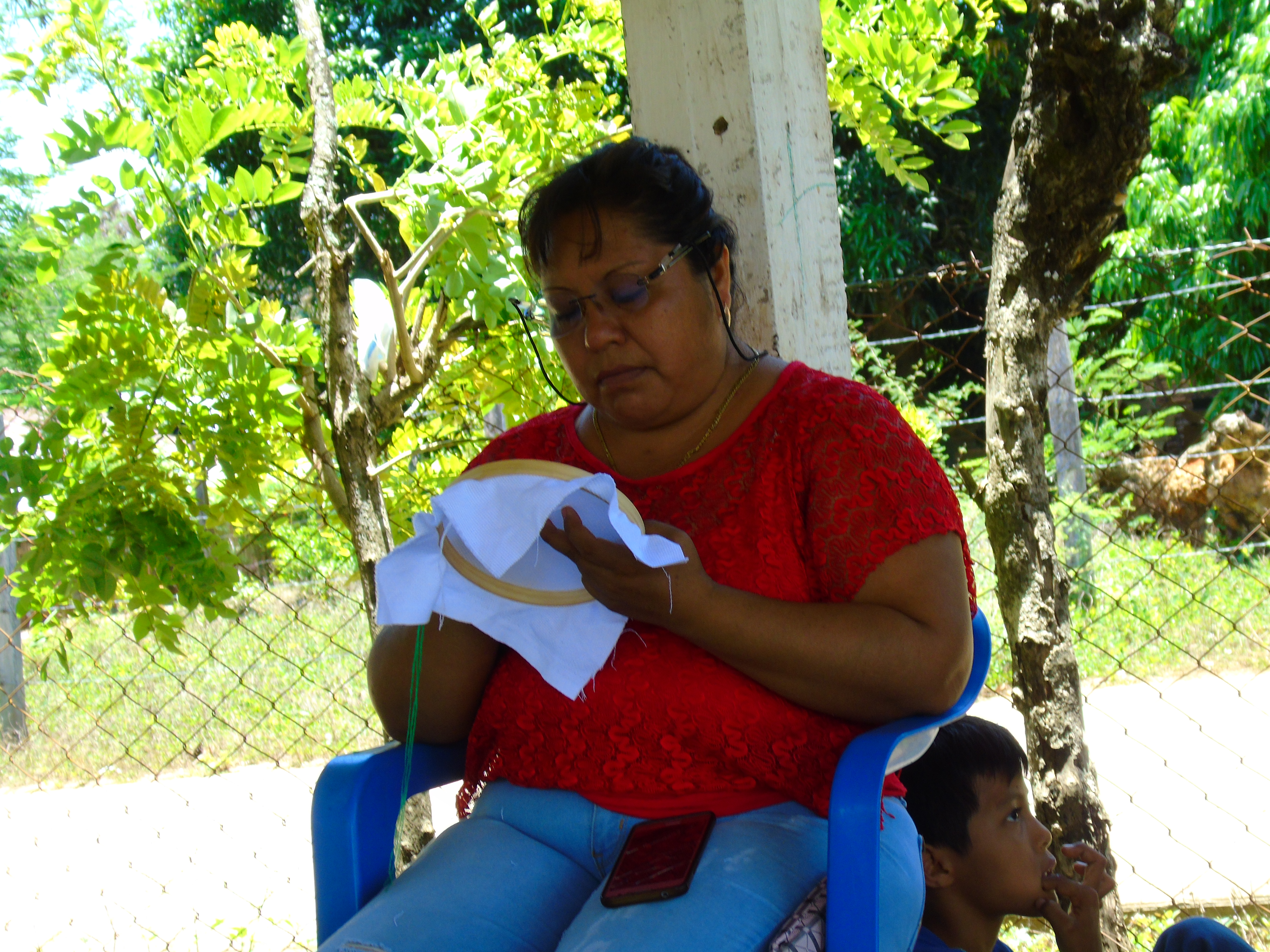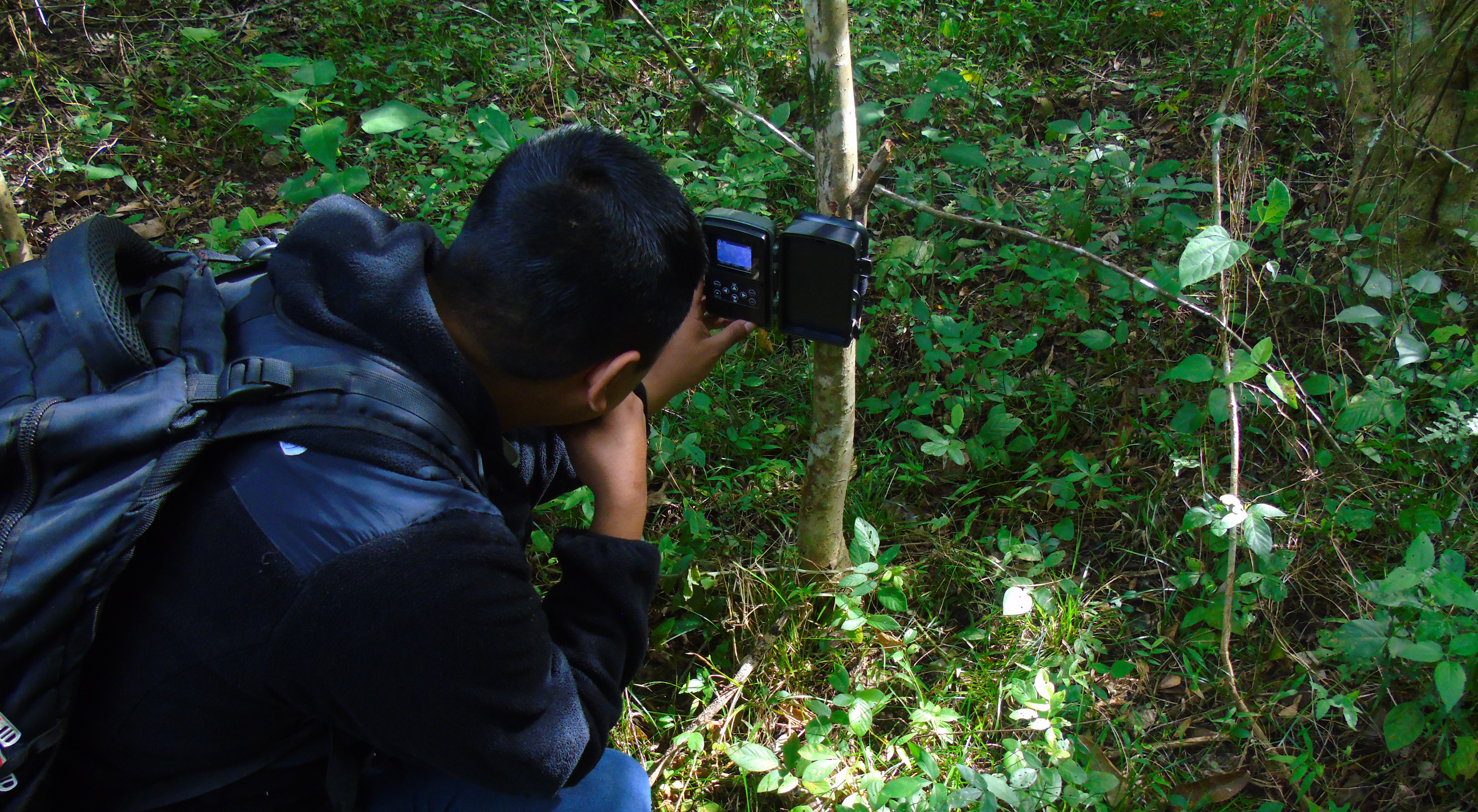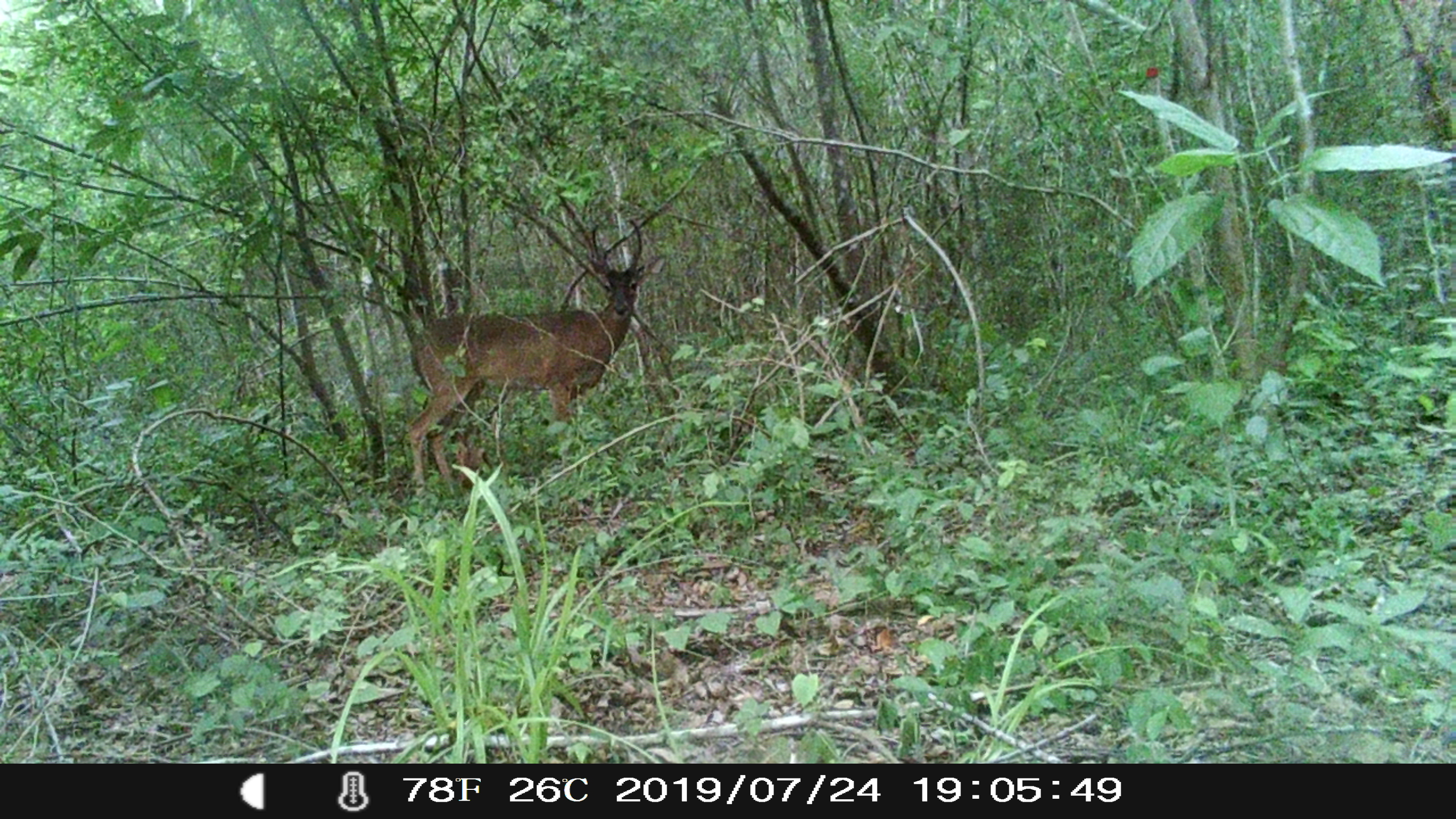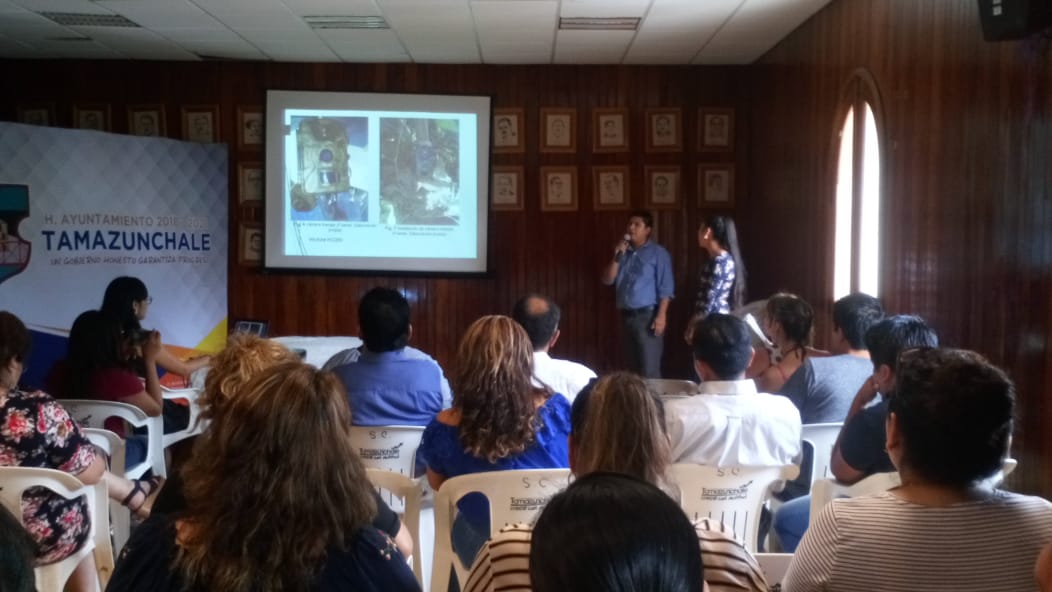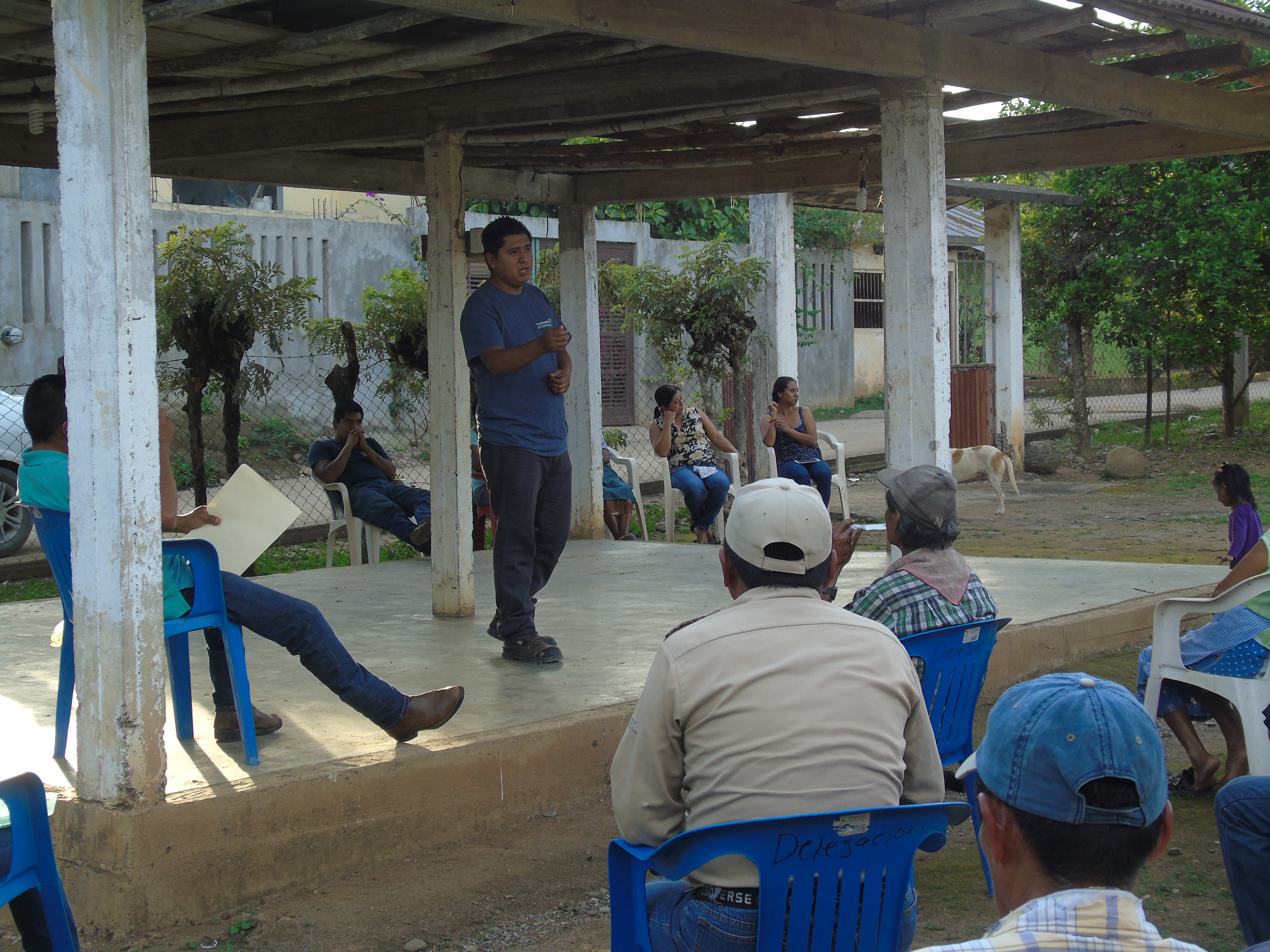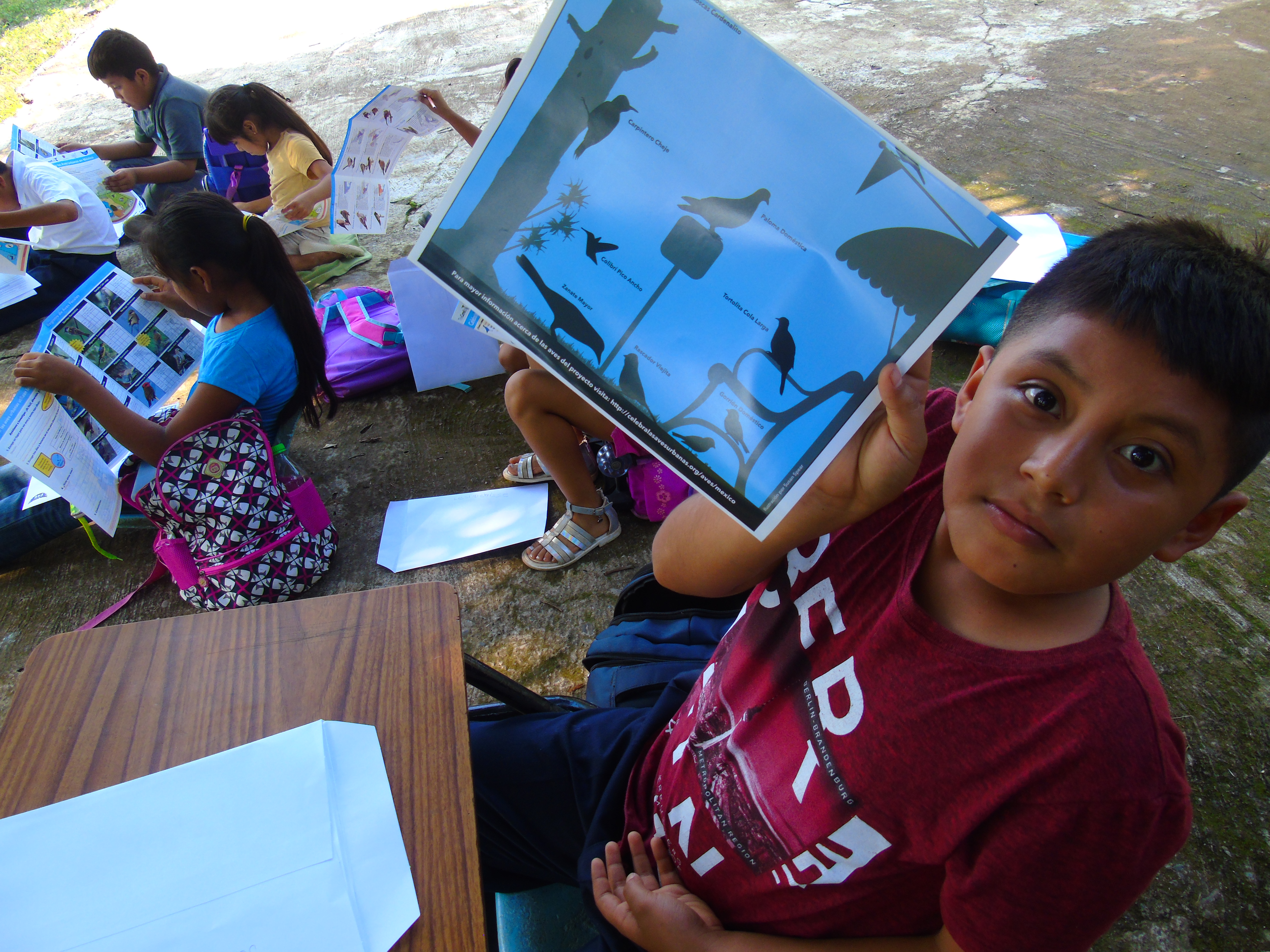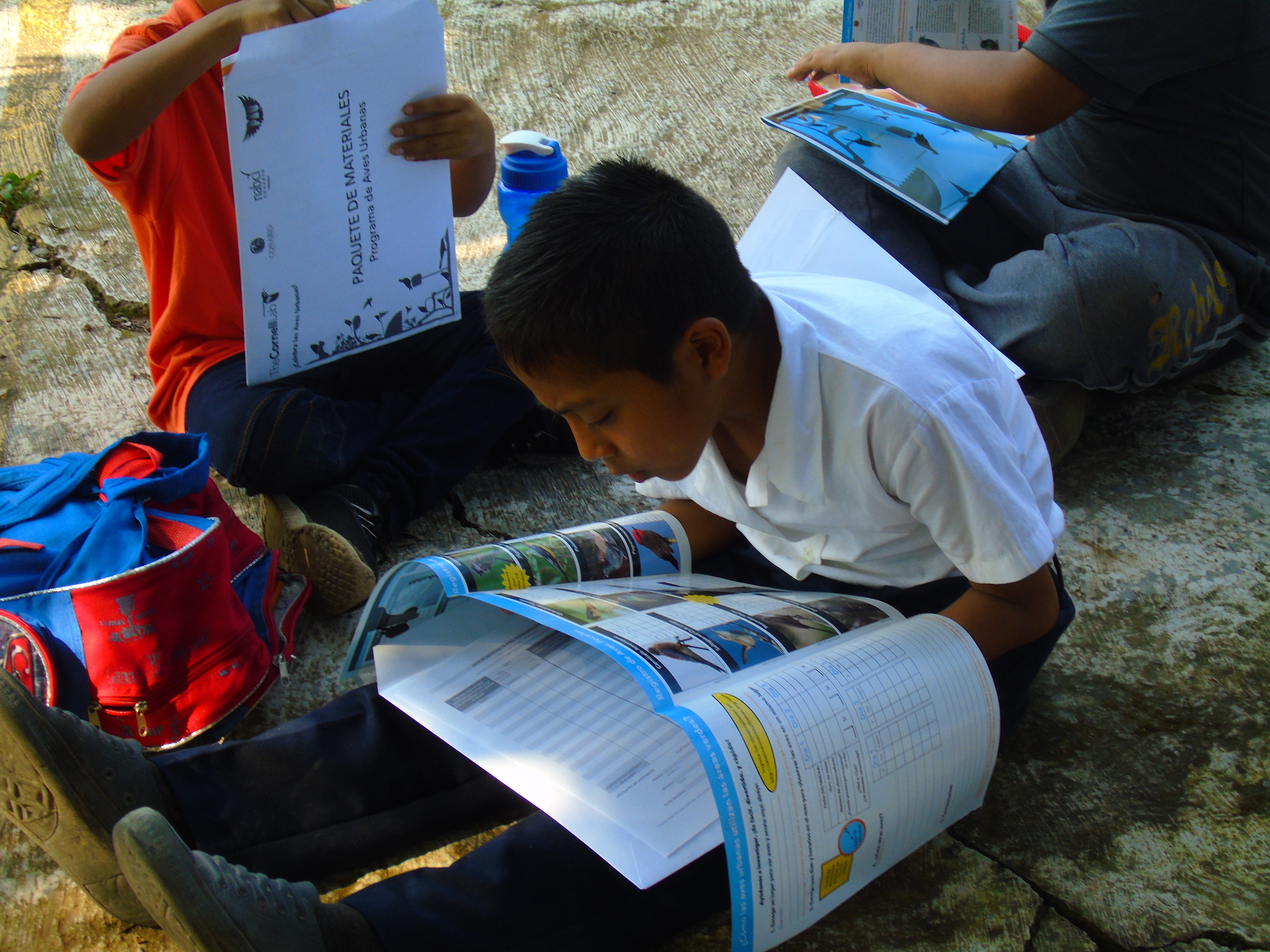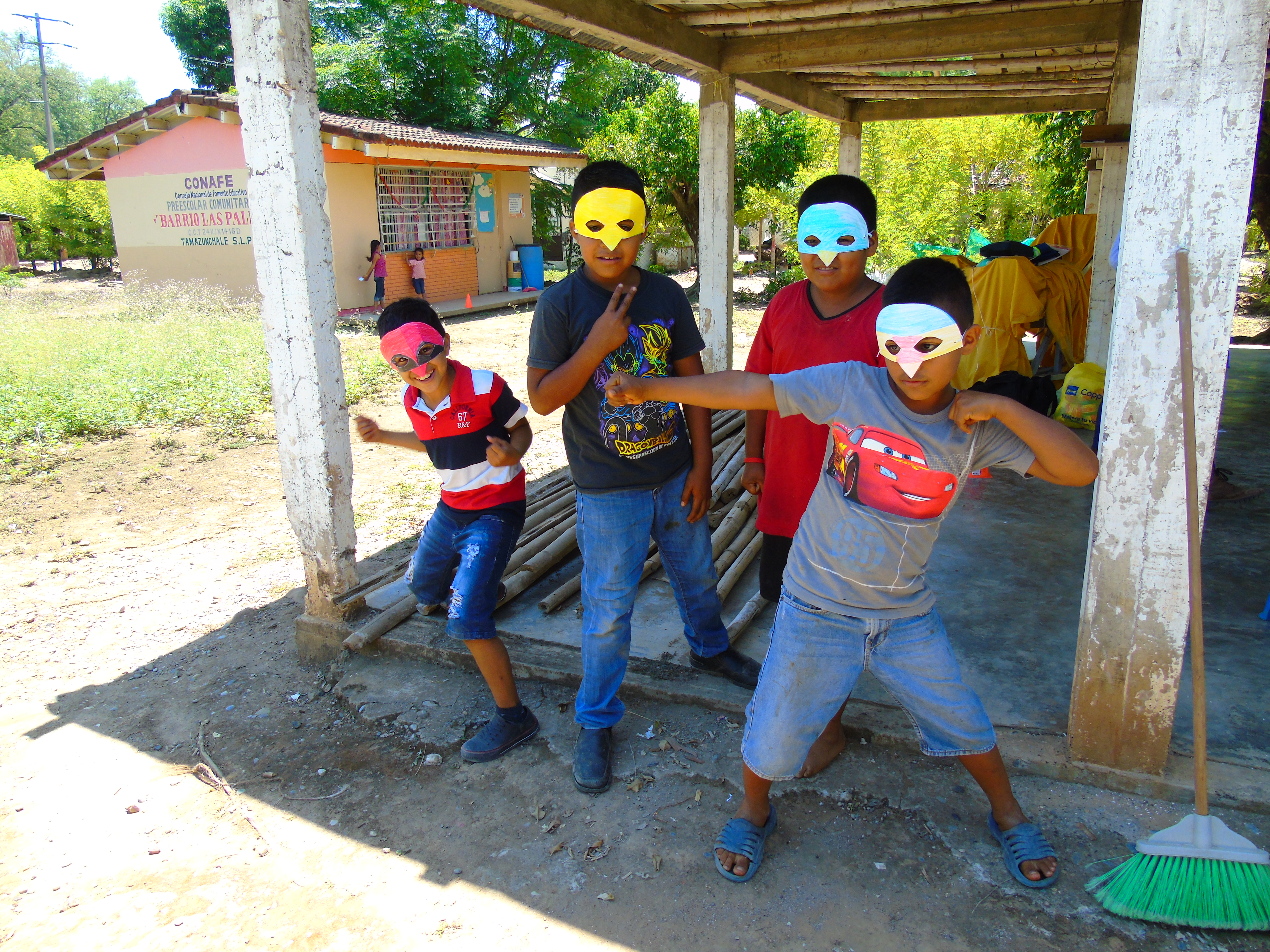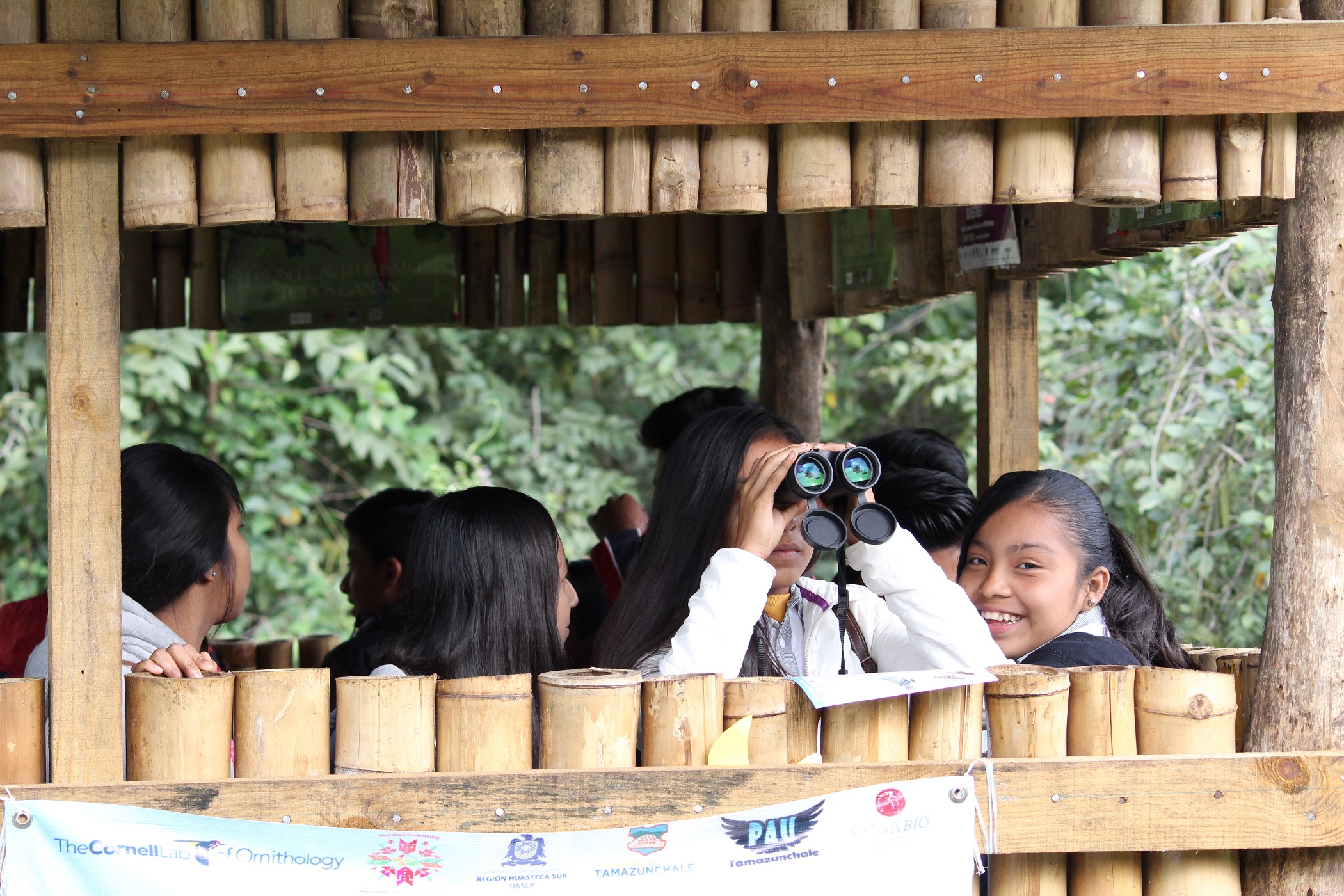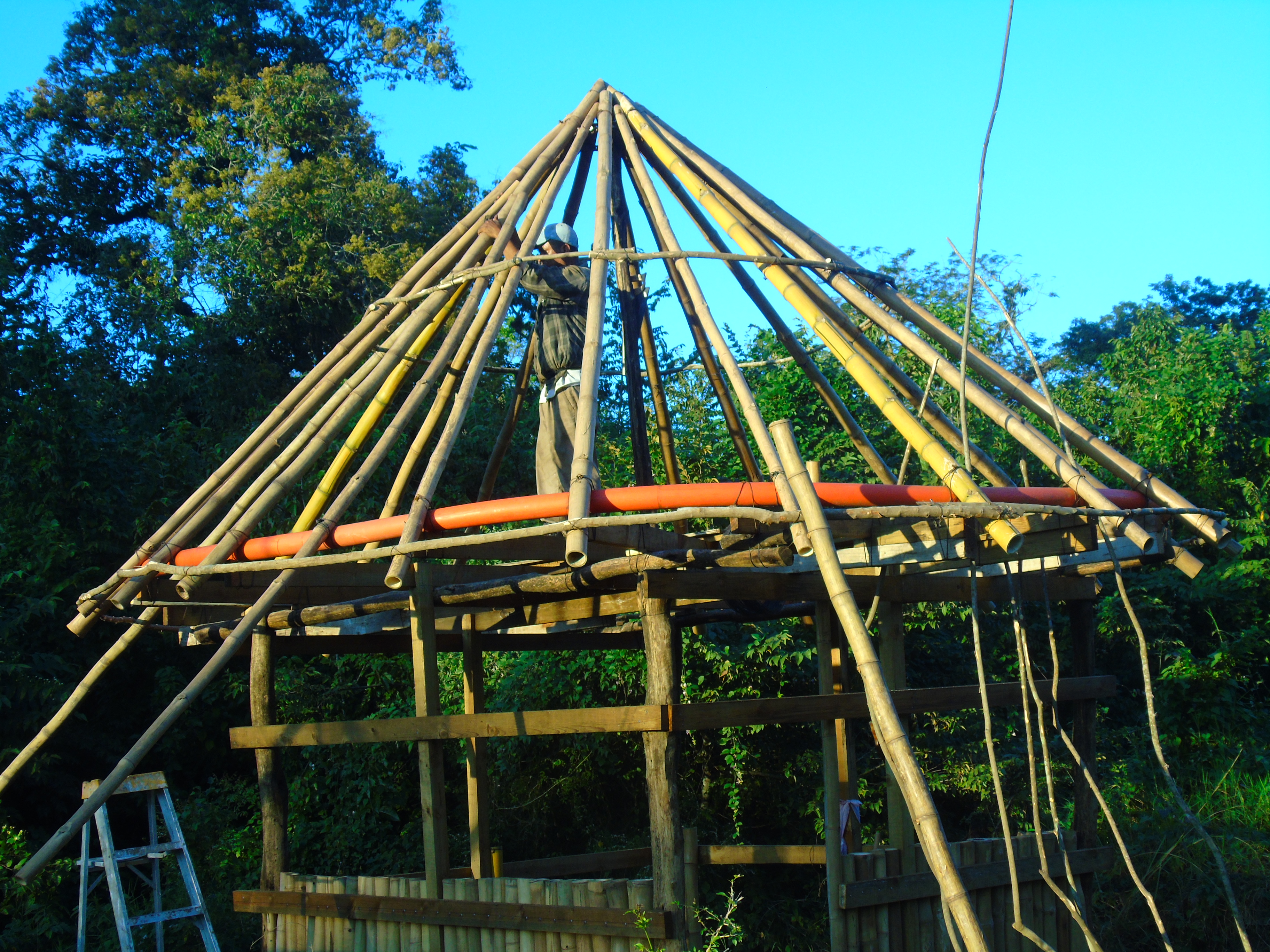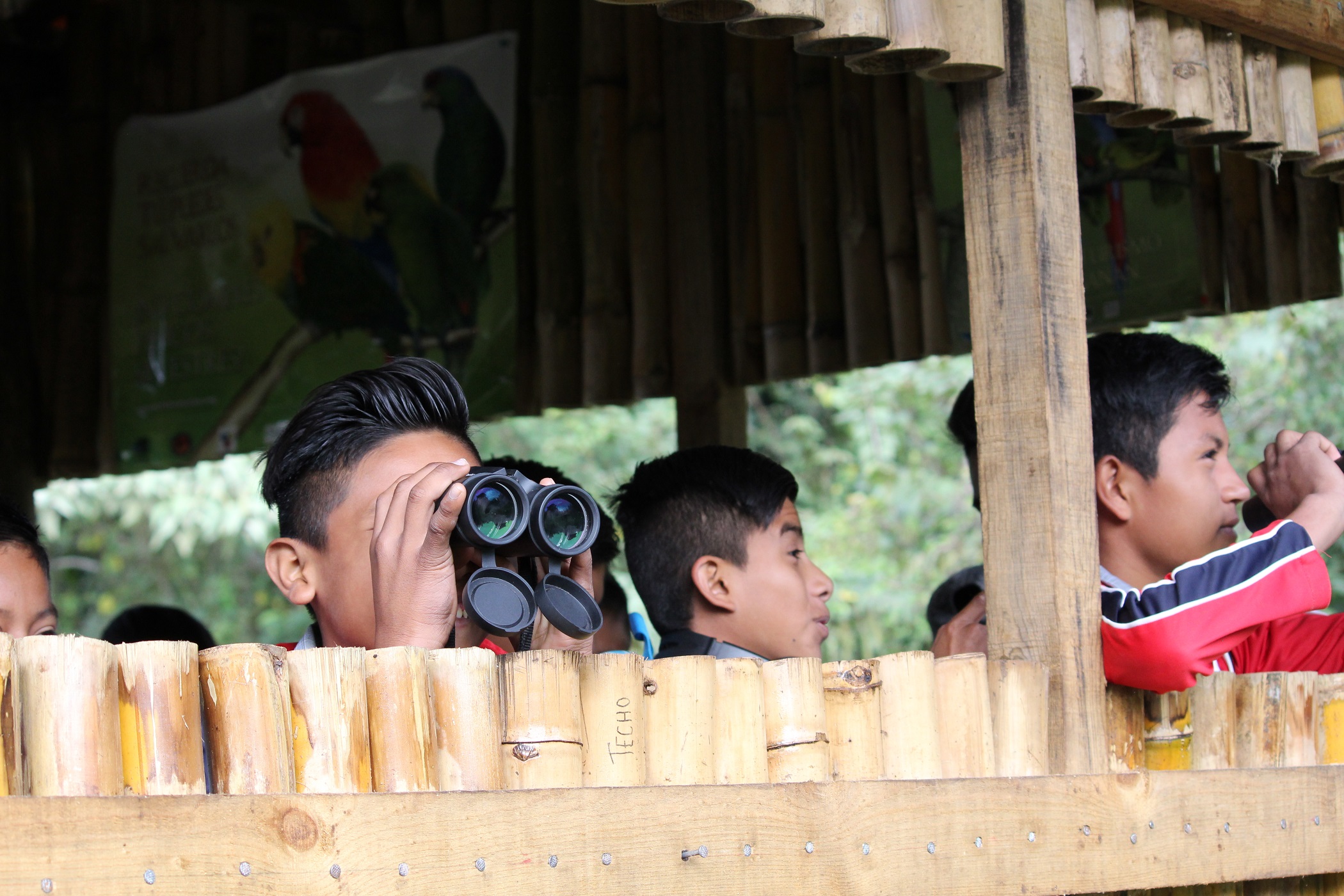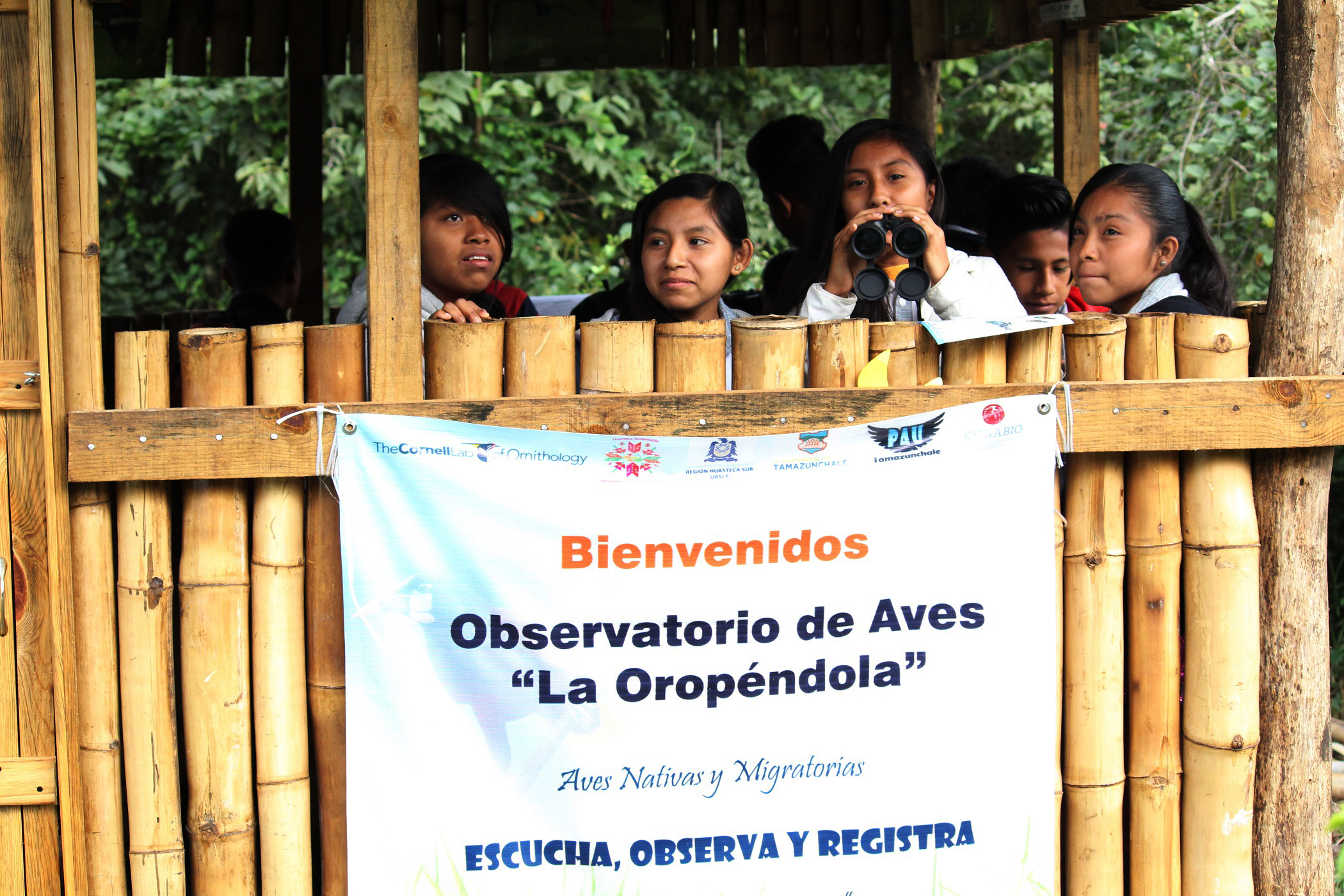 Photo ©
Salvando al Loro Huasteco
Photo ©
Salvando al Loro Huasteco
In the end of 2018 Rabith Sagahon of Tamazunchale a town located in region of San Luis Potosí, in México, received a scholarship to participate in the youth workshop Birds, Careers and Conservation that was held at the Cornell Lab of Ornithology. Rabith was selected to attend the workshop through his vision of using birds and nature to bring positive change to his community. With the support of a mini-grant for Latin America and the Caribbean, Rabith was able to bring his projects to life. The community of Tamazunchale had a wonderful time use these actives to learn and engage with the protection of birds and other wildlife!
Building Nests for the Red-lored Parrot
Rabith’s first task was to use promote the protection and conservation of the Red-lored Parrot (Amazona autumnalis) through his organization Salvando al Loro Huasteco. The first step of Rabith’s plans involved designing wooden nests for the parrot using computer software tools. Once the design was made, the nest were built out of wood. Sadly, the Red-lored Parrot is a popular bird for illegal trafficking, even though its protected by Mexican Law. This made the nest-building project a little more tricky since they had to be very careful that the bird would not be taken from the nests and sold illegally.
With this in mind, Rabith and his team picked areas where the parrots were found and got to work. The people of Tamazunchale had a great time coming together to build and install these nests! During the project people also learned a lot about the parrots, where they live, and some of the things that endanger them. There were also community meetings where people could ask questions and share their opinions about the project and learn together.

The Autonomous University of San Luis Potosí was very involved in making this project a success. Dr. Carmen del Pilar Suarez Rodriguez also help encourage community engagement and collaboration to make this activity a great success. This program was a part of the Urban Bird Program (Program de Aves Urbana’s, PAU) of CONABIO (National Program from the Use and Knowledge of Biodiversity). This activity would not have been the same without the support of several institutions, organizations, and local governments were involved. Thank you!
Engaging with Families and Women
Many families in Tamazunchale had an amazing time learning how to birdwatch! For local families bird watching can be a wonderful opportunity to connect with nature and spend time with each other. Participants learned about local birds and observed how they interact with the environment.
During the “Day of the Environment”, several fantastic workshops were held. One of these workshops, facilitated by the Engineer Marisol Manuel González “Artisanal Sewing as a Tool of Development and Biocultural Patrimony,” was specifically created to engage with women. This workshop taught women the history of sewing in the region and how these activities can be related to conservation. Women of all ages had a great time learning these new skills. Making art is a fantastic way for women to express their creativity and enjoy each others companies while sharing stories. This beautiful art also gives many local women opportunities for new forms of employment.
Monitoring wildlife
People in Tamazunchale were able to have a unique and interactive experience their natural environment through a pilot wildlife monitoring program. The goal of this activity was to install several hidden cameras throughout the forest in different kinds of habitats. These cameras even record animals at night! This way, everyone could see all the different animals in their natural homes.
The first analyses of the videos showed some important species like the whitetail deer (Odocoileus virginianus), jaguarundi (Herpailurus yagouaroundi), and collared peccary (Pecari tajacu). These species are especially important because they are currently threatened by hunting in the region.
Since part of the monitoring took place during the hottest season, this was also great opportunity to install bird baths. This way, people could observe birds through the camera when they came to drink and bathe. In the end, people were able to identify 35 different species of birds, what a success! As people observed and identified different birds, they would share their finding on social media helping other people in their community learn and develop a passion for nature.
Presenting the Results and Environmental Education
Videos and photographs are an incredible tool to share the beauty of nature with people of all different ages and backgrounds. Having an opportunity to see wildlife in their natural habitat inspired many people to have a stronger connection with nature and their local environment. The people of Tamazunchale are so lucky to have an incredible way to observe their unique wildlife!
The results of the wildlife monitoring program, were incredibly positive so Rabith and his team were really excited to share them with other people. These results were shared at many at conferences and academic events at the Autonomous University of San Luis Potosí and the 6th Fair of Science and Technology held in Tanzozob among others.
Fun activities — Using the Mexican Action Guide
The participants enjoyed the activities in the Mexican Action Guide of Celebrate Urban Birds so much that it was decided to implement them as part of the regular program in the primary school of the Las Palmas community. This idea excited the whole community and everyone was excited to help! The National Council for Educational Development (Consejo Nacional de Fomento Educativo (CONAFE)) and Lic. Cuauhtemoc Torres, regional CONAFE coordinator also provided a lot of support for this project since they believe it is a fun and educational way to promote the STEM subjects in schools. The students parents were also eager to show their support and many even signed up to be volunteers!
“La Oropéndola” The First Bird Observatory of Tamazunchale!
All the activities were very successful in the community and everyone was really excited about their local birds! This inspired Rabith and his group to develop a local avitourism program. With the support of the Autonomous University of San Luis Potosi and professor Dr. Carmen del Pilar Suarez Rodriguez the group designed the first Bird Observatory in the state of San Luis Potosi. The community is incredibly proud of all the hardworking and dedication that went into making this project!
Juan Jesus Salazar Robles was the engineer behind the construction of the observatory in the Huasteca Potosina. The observatory was constructed using sustainable materials, such as bamboo and palm leaves. Using these material meant that the observatory looked like many traditional homes in the region. This was a really important detail because it helped all the families and children who used the observatory feel that this project was a truly beautiful reflection of heir community!
In January of 2020 the bird observatory “La Oropéndola” officially opened its doors to the public with inauguration ceremony and visit of Dr. Marta del Campo. Since then, the observatory has become a fantastic resource for people to see migratory and local birds and wildlife. The observatory has inspired so many people become more engaged in conservation and environmental education in Tamazunchale. This place has also been an amazing way for community to spend time together and share the joy of nature. So inspiring!
Thanks to the efforts of the community and Rabith’s initiatives, the group Salvando al Loro Huasteco is having a deep positive impact on the community and the promotion of sustainable development and wildlife conservation in the region. Rabith has truly shown us so many creative ways to bring a positive change in your community through sharing your passion for birds and wildlife!
Salvando al Loro Huasteco would like to thank everyone who helped with this collaborative effort. Thank you to Dr. Carmen del Pilar Suárez Rodriguez for giving direction and support, to the Ing. Marisol Manuel González for her total support and help during the activities, to the Asociación Civil de Pequeños Ingenieros A.C. (Association of Young Engineers A.C.) for their assistance. A special thanks to the community of Las Palmas, Tamazunchale and their authorities for letting us have hope towards a better future through bird conservation and sustainable development. To Dr. Marta del Campo, Karen Purcell and the Cornell Lab of Ornithology thank you for your support, which helped to have a such positive impact on this region.
Photos are courtesy of Salvando al Loro Huasteco.
Written by Natalie Bonilla, Julia Luna, and Lorena Flores. Edited by Debra Nero.

